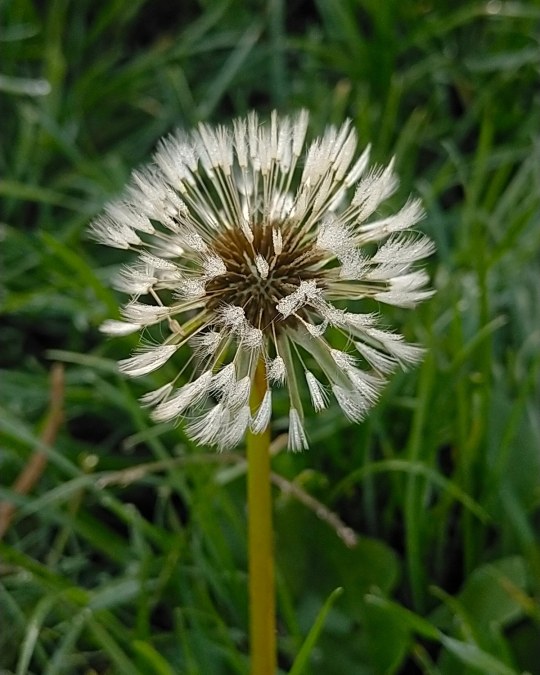#cypsela
Explore tagged Tumblr posts
Text

Taraxacum officinale
17-MAY-2023
Melbourne, Vic
#australia#victoria#melbourne#seeds#cypsela#morning dew#pappus#white#green#grass#dandelion#asterids#asterales#asteraceae#taraxacum#taraxacum officinale
1 note
·
View note
Text
Meet Erigeron linearis
Erigeron is a genus of herbaceous, flowering plants consisting of between 390 and 460 species and is a member of the aster/sunflower family (Asteraceae). Plants in this genus are annuals, biennials, or perennials and are mainly found in temperate regions around the world. At least 163 species occur in the contiguous United States. Erigeron diversity is particularly high in western states;…

View On WordPress
#Asteraceae#Botany#cypsela#desert yellow fleabane#Erigeron#Erigeron linearis#flowering plants#flowers#Intermountain West#lithosols#native plants#plant ecology#plants#sagebrush checkerspots#sagebrush steppe#seedlings#seeds
27 notes
·
View notes
Photo







Prairie Sun
(unranked): Angiosperms (unranked): Eudicots (unranked): Asterids Order: Asterales Family: Asteraceae Genus: Rudbeckia Species: R. hirta
Native Range: North America
Height: 30-90cm
Spread: 30-45cm
Bloom Description: Summer to early autumn blooming
Life-cycle: Perennial
Sun: Full-sun
Water: Well-drained soil
Maintenance: Cut back in late autumn
Suggested Use: Ornamental/ Cut flowers/ Potted plant
Flower: Light green/yellow center with orange to yellow petals
Fruit: Cypsela
Tolerates: Seaside/Salt
Noteworthy Characterisics:
Problems:
Seed Provenance:
#cypsela#ornamental#cut flowers#potted plant#full sun#yellow flowers#orange flowers#perennial#rudbeckia hirta#rudbeckia#asteraceae#asterales#asterids#eudicots#angiosperms#prairie sun#rudbeckia hirta prairie sun
0 notes
Photo



Diseño de Marca para la banda Cypsela, logotipo construído a partir de la tipografía Helvética de Max Miedinger. Concepto y diseño de imagen gráfica, fotografía, retoque digital y diseño gráfico para el demo1.
0 notes
Photo


Missouri Coneflower
Black Eyed Susan
(unranked): Angiosperms (unranked): Eudicots (unranked): Asterids Order: Asterales Family: Asteraceae Subfamily: Asteroideae Tribe: Heliantheae Genus: Rudbeckia
Species: R. missouriensis
Native Range: Central North America
Height: 70cm-1m
Spread: 30-70cm
Bloom Description: Summer to early autumn blooming
Life-cycle: Perennial
Sun: Full sun
Water: Well-drained
Maintenance: Cut back in late autumn
Suggested Use: Ornamental/ Cut flowers
Flower: Daisy-like flower with yellow petals on a black center.
Fruit: Cypsela
Tolerates: Hot/humid summers and some drought.
Noteworthy Characterisics:
Problems:
Seed Provenance:
#drought tolerant#cypsela#yellow flowers#ornamental#cut flowers#full sun#perennial#summer blooming#autumn blooming#rudbeckia#rudbeckia missouriensis#Heliantheae#Asteroideae#asteraceae#asterales#asterids#eudicots#angiosperms#black eyed susan#missouri coneflower
0 notes
Photo




Cherry Brandy
(unranked): Angiosperms (unranked): Eudicots (unranked): Asterids Order: Asterales Family: Asteraceae Genus: Rudbeckia Species: R. hirta
Native Range: N. America
Height: 30-90cm
Spread: 30-45cm
Bloom Description: Summer and early autumn blooming
Life-cycle: Perennial, often grown as annual
Sun: Full-sun
Water: Well-drained
Maintenance: Cut back in late autumn
Suggested Use: Ornamental/ Cut flowers
Flower: Daisy-like flowers with dark red centers that fade lighter toward petal tips
Fruit: Cypsela
Tolerates: Seaside/Salt
Noteworthy Characterisics:
Problems:
Seed Provenance:
#cypsela#red flowers#cut flowers#ornamental#full sun#pernnial#summer blooming#early autumn blooming#rudbeckia hirta#rudbeckia#black eyed susan#asteraceae#asterales#asterids#eudicots#angiosperms#rudbeckia cherry brandy
0 notes





